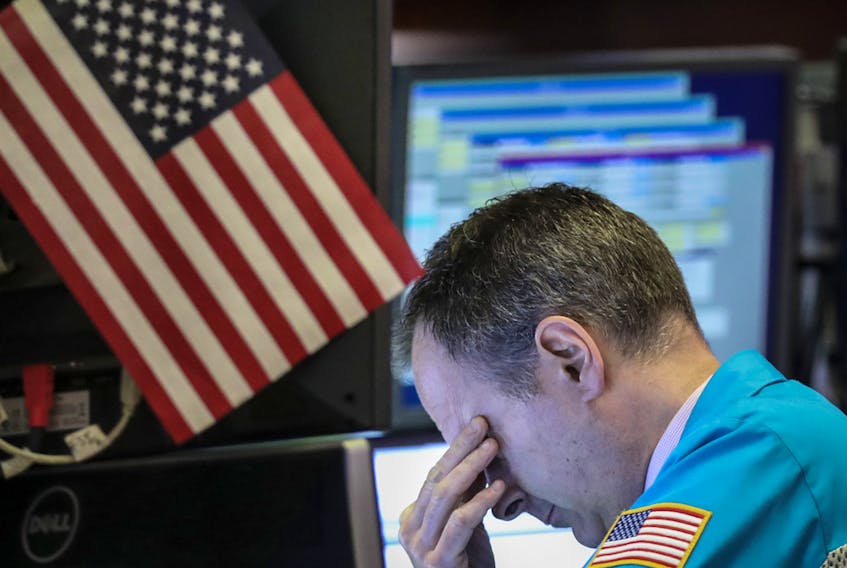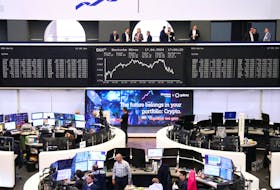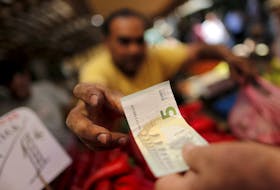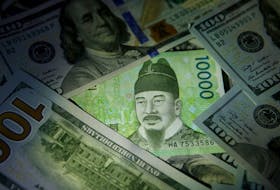There were a few basic tenets behind the impressive rally through the first four months of the year, that just four weeks ago had taken the stock market to new highs and made the bears look foolish.
To be fair, it was more or less a round trip from the meltdown in the fourth quarter of 2018, but the turnaround came fast and furious. It was, however, 100 per cent a P/E multiple expansion-led rebound, none of it built on anything truly fundamental. And multiple expansions denote a lot of investor confidence in the future along with a dollop of hope.
None of the hopes underpinning the rally proved to be enduring, and now the multiple is reversing course. Let’s examine them:
1. A trade deal with China. This was supposed to be a done deal by now. Instead, we have a spreading trade war between the world’s two dominant economic powerhouses.
2. A smooth Brexit deal. Well, this isn’t happening either. Just more confusion, with the rising prospect that Jeremy Corbyn becomes the next U.K. Prime Minister.
3. Data stability out of China in the aftermath of the monetary and fiscal policy stimulus measures. Unlike 2008/09, this stimulus package lacked teeth and had no lingering impact. And the data stability narrative lasted only about two months.
4. The Fed pivot would shave the strength in the U.S. dollar, and pave the way for a durable rally in emerging markets and commodities. The DXY U.S. dollar index is strengthening, not weakening, and this is a critical constraint on global liquidity.
5. The European economy was starting to see ‘green shoots’. Well, the recent data flow show that green has turned to brown in no time at all.
6. Oil prices were recovering. The stock market surge from January-April was led by the sharp rebound in oil prices, courtesy of the OPEC discipline in its output cut agreement. Because the U.S. is a net oil producer now, WTI and the S&P 500 have a positive relationship — in contrast to the historical negative correlation. Well, the run-up in crude inventories has certainly managed to take care of the supply shortage story and now the oil price is back in official correction mode.
7. Infrastructure spending. Remember at the start of the year when hopes were high that this was one area where there was bipartisan support? Well, that got kiboshed on Wednesday when the President stepped back from any such initiative until the Democrats cease their investigations.
8. The slowing in the U.S. economy was supposed to be transitory, just owing to the government shutdown and adverse winter weather. Tax rebates were widely viewed as being supportive of consumer spending. Well, consumer spending in Q1 disappointed and the only reason why real GDP growth didn’t come in around 1 per cent was because of sagging imports, soaring exports of soybeans, military spending and bloated inventories. Meanwhile, the Atlanta Fed forecast for Q2 is a mere 1.2 per cent, which is otherwise known as a ‘stall speed’ economy.
So we have the P/E multiple now being compressed as the market re-rates itself toward more risk and less hope. And then we have to couple that with the ongoing reductions in earnings estimates. What is interesting is that even at the late-2018 depressed lows in the stock market, nobody was talking about, or predicting, an earnings recession. In fact, back then, the consensus for year-over-year earnings-per-share growth for the S&P 500 was +2.9 per cent for Q1, +3.7 per cent for Q2, +4.2 per cent for Q3 and +12.1 per cent for Q4. Fast-forward to now, and the bottom-up consensus is -0.4 per cent for Q1, -2.1 per cent for Q2, +0.3 per cent for Q3 and +7.2 per cent for Q4. So actually, we are in an earnings recession, even if mild.
That wasn’t supposed to happen. But it did. And the bright lights then told everyone a few months ago not to worry, that there would be a big recovery in Q3. Well, that’s not in the cards any more, either. And look at the fourth quarter — still positive, to be sure, but even here we see the equity analysts having shaved about 5 percentage points for the projected year-over-year trend.
David Rosenberg is chief economist and strategist at Gluskin Sheff + Associates Inc. and author of the daily economic report, Breakfast with Dave.
Copyright Postmedia Network Inc., 2019









